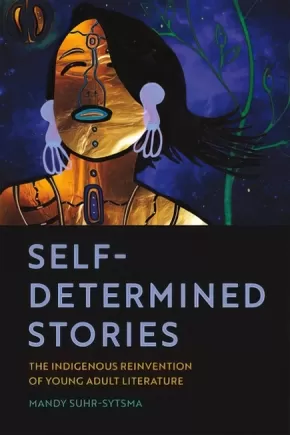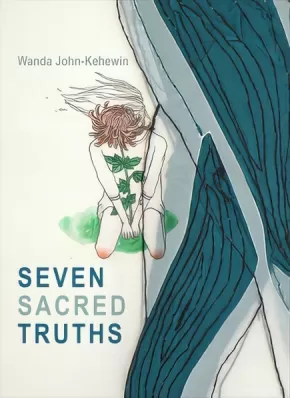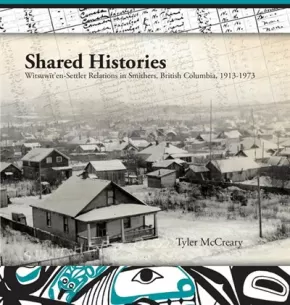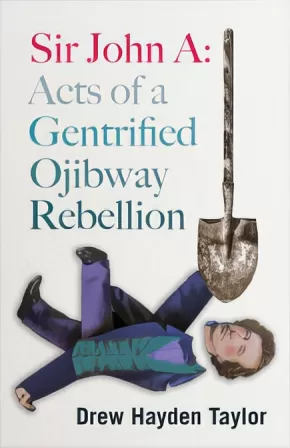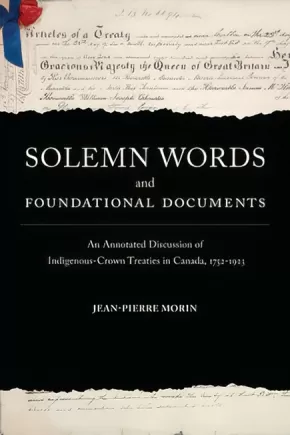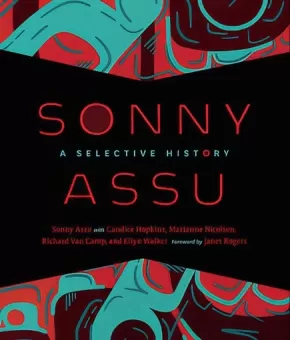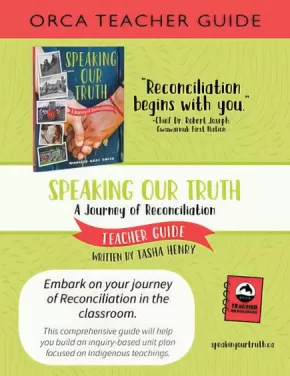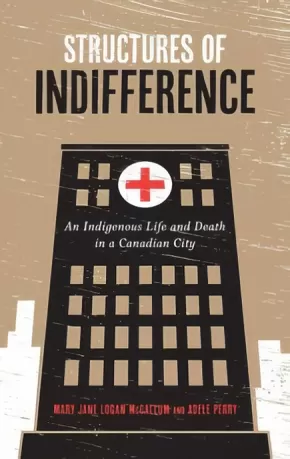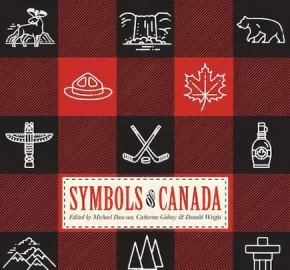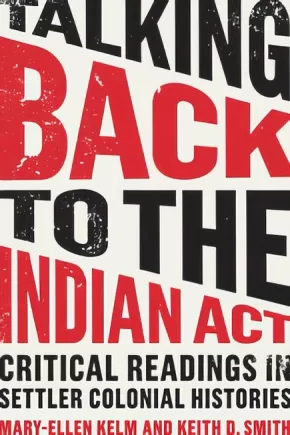
Adult Book
1096
-
1110
of
1380 Results;
Sort By
Go To
of 92
Sacred Instructions: Indigenous Wisdom for Living Spirit-Based Change
$27.95
Format:
Paperback
Text Content Territories:
Indigenous American; Native American; Penobscot;
ISBN / Barcode: 9781623171957
Synopsis:
Synopsis:
Ancient indigenous wisdom to light the way toward a contemporary path for everyone seeking a more loving and balanced world.
Drawing from ancestral knowledge, as well as her experience as an attorney and activist, Sherri Mitchell addresses some of the most crucial issues of our day—including indigenous land rights, environmental justice, and our collective human survival. Sharing the gifts she has received from the elders of her tribe, the Penobscot Nation, she asks us to look deeply into the illusions we have labeled as truth and which separate us from our higher mind and from one another. Sacred Instructions explains how our traditional stories set the framework for our belief systems and urges us to decolonize our language and our stories. It reveals how the removal of women from our stories has impacted our thinking and disrupted the natural balance within our communities.
For all those who seek to create change, this book lays out an ancient worldview and set of cultural values that provide a way of life that is balanced and humane, that can heal Mother Earth, and that will preserve our communities for future generations.
Additional Information
256 pages | 5.50" x 8.48" | Paperback
Self-Determined Stories: The Indigenous Reinvention of Young Adult Literature
$29.95
Format:
Paperback
Text Content Territories:
Indigenous American; Indigenous Canadian;
Grade Levels: University/College;
ISBN / Barcode: 9781611862980
Synopsis:
Synopsis:
Reimagining Indigenous empowerment.
The first book of its kind, Self-Determined Stories: The Indigenous Reinvention of Young Adult Literature reads Indigenous-authored YA-from school stories to speculative fiction-not only as a vital challenge to stereotypes but also as a rich intellectual resource for theorizing Indigenous sovereignty in the contemporary era.
Building on scholarship from Indigenous studies, children’s literature, and cultural studies, Suhr-Sytsma delves deep into close readings of works by Sherman Alexie, Jeannette Armstrong, Joseph Bruchac, Drew Hayden Taylor, Susan Power, Cynthia Leitich Smith, and Melissa Tantaquidgeon Zobel. Together, Suhr-Sytsma contends, these works constitute a unique Indigenous YA genre. This genre radically revises typical YA conventions while offering a portrayal of Indigenous self-determination and a fresh critique of multiculturalism, heteropatriarchy, and hybridity. This literature, moreover, imagines compelling alternative ways to navigate cultural dynamism, intersectionality, and alliance-formation.
Self-Determined Stories invites readers from a range of contexts to engage with Indigenous YA and convincingly demonstrates the centrality of Indigenous stories, Indigenous knowledge, and Indigenous people to the flourishing of everyone in every place.
Contents
Introduction
Ch. 1: A Rebel with a Community, Not Just Cause: Revising YA Power Dynamics and Uniquely Representing Indigenous Sovereignty in Jeannette Armstrong's Slash
Ch. 2: Indigenous School Stories: Alternatives to Multiculturalism in Sherman Alexie's The Absolutely True Diary of a Part-Time Indian and Joseph Bruchac's The Heart of a Chief
Ch. 3: Not Your Father's Pocahontas: Cynthia Leitich Smith's and Susan Power's Resistive Romance
Ch. 4: That's One Story: Reworking Hybridity through Melissa Tantaquidgeon Zobel's and Drew Hayden Taylor's Speculative Fiction
Coda: Alexie's Flight, Zobel's Wabanaki Blues, and the Future of Indigenous YA Literature
Additional Information
214 pages | 6.00" x 9.00"
Seven Sacred Truths
$18.95
Format:
Paperback
Text Content Territories:
Indigenous Canadian; First Nations;
ISBN / Barcode: 9781772012132
Synopsis:
Synopsis:
Seven Sacred Truths explores the perspective of an Indigenous Woman on a continuous journey of healing from trauma.
Seven Sacred Truths presents a powerful exploration of an Indigenous woman's healing journey. Seeing the world through "brown" eyes, poet Wanda John-Kehewin makes new meaning of the past, present, and future through a consideration of Love, Wisdom, Truth, Honesty, Respect, Humility, and Courage. By sharing her views on these Seven Sacred Truths and what they meant to her growing up, John-Kehewin instigates a therapeutic process of restoration and transformation. Her Seven Sacred Truths uncovers new meaning in the written word - meaning that can be shared with others who have lived trauma or who want insight into it. John-Kehewin strives to create a safe space and provide the opportunity to experience another perspective; she invites readers to embark on their own healing journeys. The closer you are to the truth, she writes, the freer you become.
Wanda John-Kehewin uses writing as a therapeutic medium to understand and respond to the near-decimation of First Nations cultures and traditions.
Educator Information
Recommended in the Canadian Indigenous Books for Schools 2019-2020 resource list for grades 10 to 12 for English Language Arts.
Additional Information
120 pages | 5.50" x 8.50"
Shared Histories: Witsuwit'en - Settler Relationships in Smithers, British Columbia, 1913-1973
$27.95
Format:
Paperback
Text Content Territories:
Indigenous Canadian; First Nations; Dene; Dakelh (Carrier); Wet’suwet’en;
Grade Levels: University/College;
ISBN / Barcode: 9781928195047
Synopsis:
Synopsis:
Using extensive first-hand interviews with both Witsuwit'en and settler elders, Shared Histories describes what happened in the 50 years after the Grand Trunk Pacific Railway established Smithers in the middle of Witsuwit'en territory in northwest British Columbia. By examining these relationships in the context of the history of colonization throughout the province, the author has written an open and honest portrayal of the ways in which the Witsuwit'en were marginalized, but still managed to create and maintain a place for themselves in a community that didn't want them.
Written with extensive consultation with members of the Witsuwit'en community and some of the town's earliest settler families, Shared Histories brings to life the often unwritten history of the ways in which these communities both clashed and joined forces. Its careful use of academic sources and the lived experience of participants make it the kind of history we all need to read.
This book will appeal to history buffs, educators, and academics and to those interested in First Nations and British Columbia history, truth, and reconciliation projects.
Awards
- Winner of the 2019 Lieutenant Governor's Medal for Historical Writing
Additional Information
200 pages | 9.50" x 9.00"
Sir John A: Acts of a Gentrified Ojibway Rebellion
$17.95
Format:
Paperback
Text Content Territories:
Indigenous Canadian; First Nations; Anishinaabeg; Ojibway;
ISBN / Barcode: 9781772012149
Synopsis:
Synopsis:
An uproariously funny and sharply inquisitive play from one of Canada’s leading Indigenous playwrights, Sir John A: Acts of a Gentrified Ojibway Rebellion explores the possibility of reconciliation between Peoples and urgently questions past and contemporary forms of Canadian colonialism. Taylor’s twenty-seventh play, Sir John A’s characters include Canada’s infamous first Prime Minister, red-nosed and pompous, full of patriarchal contempt for those “strange and perplexing Indians,” and his contemporary accusers: two Ojibway men and a soul-searching white woman.
Bobby Rabbit, Sir John A’s irked, Anishinaabe main character, in a fit of anger and revenge, convinces his friend Hugh to accompany him on a “sojourn of justice”: to dig up Sir John A. Macdonald’s bones and hold them for ransom. Decades before, a medicine pouch belonging to Bobby’s grandfather was taken away by the staff of the residential school where he was detained. The precious object was sent to a British Museum exhibition room for conservation – and now Bobby wants it repatriated. Along the way the pair pick up Anya, a young, bright, and opinionated woman fleeing a bad breakup, with conflicting ideas about Sir John A’s place in Canadian history. Not to be left out of the argument, Canada’s first Prime Minister, broadcasting live from nineteenth-century Ottawa, shows up with opinions of his own.
Sir John A: Acts of a Gentrified Ojibway Rebellion is a powerful satire, a creative debate about the past violences of colonial racism and the as yet untested potentiality of restoring harmony between Peoples in Canada. A contemporary classic by Taylor!
Educator Information
Recommended in the Canadian Indigenous Books for Schools 2019-2020 resource list for grades 10 to 12 for Drama and English Language Arts.
Additional Information
128 pages | 5.50" x 8.50"
Solemn Words and Foundational Documents: An Annotated Discussion of Indigenous-Crown Treaties in Canada, 1752-1923
$47.95
Format:
Paperback
Text Content Territories:
Indigenous Canadian;
Grade Levels: University/College;
ISBN / Barcode: 9781487594459
Synopsis:
Synopsis:
In Solemn Words and Foundational Documents, Jean-Pierre Morin unpacks the complicated history of Indigenous treaties in Canada. By including the full text of eight significant treaties from across the country—each accompanied by a cast of characters, related sources, discussion questions, and an essay by the author—he teaches readers how to analyze and understand treaties as living documents.
The book begins by examining treaties concluded during the height of colonial competition, when France and Britain each sought to solidify their alliances with Indigenous peoples. It then goes on to tell the stories of treaty negotiations from across the country: the miscommunication of ideas and words from Crown representatives to treaty text; the varying ranges of rights and promises; treaty negotiations for which we have a rich oral history but limited written records; multiple phases of post-Confederation treaty-making; and the unique case of competing treaties with radically different interpretations.
Educator Information
TABLE OF CONTENTS
Timeline
Introduction: Reading a Treaty and Overview of Treaties Addressed by Chapter
1. 1752 Peace and Friendship Treaty
2. 1760 Huron-British Treaty
3. 1805 Treaty 13 (Toronto Purchase)
4. 1850 Robinson-Huron Treaty
5. 1852 Saanich Treaty
6. 1871 Treaty 1
7. 1899 Treaty 8
8. 1923 Williams Treaty
Appendix 1: Cast of Characters
Appendix 2: Glossary of Terms
Reviews
"Solemn Words and Foundational Documents heeds the Truth and Reconciliation Commission’s call for a better understanding of treaties in what is now Canada. Using a case-study approach, Morin provides students with important and accessible information about the treaties themselves, their continued significance, and the relationship between oral and written historical sources. Aimed at senior undergraduate students, the discussion questions, format, and perspectives included in the text make for a valuable pedagogical tool." - Lianne C. Leddy, Wilfrid Laurier University
"In order for reconciliation to occur, Canadians need to better understand how we came to live on Indigenous land, and Morin’s important new book helps to do just that. Historical documents related to treaty history are often scattered across archives and hard to access. This book brings together the treaties themselves, along with related documents and a sharp analysis. The result is a valuable book that will be read by students, scholars, and the general public who are increasingly coming to realize that still today, we are living in treaty relationships with First Nations." - Alison Norman, Trent University
Additional Information
280 pages | 6.00" x 9.00"
Sonny Assu: A Selective History
$34.95
Format:
Paperback
Text Content Territories:
Indigenous Canadian; First Nations; Kwakwaka'wakw (Kwakiutl); Ligwilda'wx (Laich-kwil-tach);
ISBN / Barcode: 9781772031706
Synopsis:
Synopsis:
A stunning retrospective highlighting the playfulness, power, and subversive spirit of Northwest Coast Indigenous artist Sonny Assu.
Through large-scale installation, sculpture, photography, printmaking, and painting, Sonny Assu merges the aesthetics of Indigenous iconography with a pop-art sensibility. This stunning retrospective spans over a decade of Assu’s career, highlighting more than 120 full-colour works, including several never-before-exhibited pieces.
Through analytical essays and personal narratives, Richard Van Camp, Marianne Nicolson, Candice Hopkins, and Ellyn Walker provide brilliant commentary on Assu’s practice, its meaning in the context of contemporary art, and its wider significance in the struggle for Indigenous cultural and political autonomy. Exploring themes of Indigenous rights, consumerism, branding, humour, and the ways in which history informs contemporary ideas and identities, Sonny Assu: A Selective History is the first major full-scale book to pay tribute to this important, prolific, and vibrant figure in the Canadian contemporary art world.
Reviews
"Educators and students will find numerous access points and opportunities to examine our nation's beliefs, actions, words, and legislation. [This book] also invites readers to knowledgeably and compassionately consider how we can reconcile all that has been with all that can be"—Canadian Indigenous Books for Schools 2018-2019
"Framed by contributions from some of our brightest Indigenous intellectuals, Sonny Assu’s canvas is more than an examination of how Indigenous Peoples respond to the Canadian experience. His witty and gentle hand offers Canada a mirror to consider its own scarred identity."—Michael Nicoll Yahgulanaas
“This brilliant book not only provides readers with an overview of the career of one of Canada’s most important artists but also links his development to the contemporary creative practices of First Nations artists in BC politics and history—the intersection of stories with visual expression. All this unveils historical truths and artistic insights that elevate Sonny Assu to greatness." —Dr. Ron Burnett, Order of Canada, Order of BC. President and vice-chancellor, Emily Carr University of Art and Design
Educator Information
Recommended for Grades 9-12 for these subjects: Art Education, Social Justice, Social Studies.
Additional Information
224 pages | 8.50" x 10.00"
Speaking Our Truth Teacher Guide
$29.95
Format:
Paperback
Text Content Territories:
Indigenous Canadian;
ISBN / Barcode: 9781459822221
Synopsis:
Synopsis:
Speaking Our Truth: A Journey of Reconciliation is a nonfiction book for middle readers that examines how we can foster Reconciliation in an accessible way. Centered around the writings of Monique Gray Smith, this teacher guide is a comprehensive support for educators focusing on Indigenous teachings and looking to build an inquiry-based unit plan about Reconciliation. Activities such as essential questions from the author, metaphors for learning and cross-curricular plans are laid out clearly, with instructions and appropriate vocabulary for teachers and students to embark on this journey of Reconciliation together.
Educator Information
This resource helps teachers embark on a journey of Reconciliation in the classroom. The author, Tasha Henry, holds a Master of Education in Language, Culture and Teaching from York University and has been teaching for over twenty years.
Recommended in the Canadian Indigenous Books for Schools 2019-2020 resource list as being a useful Teacher Resource with regard to English Language Arts, Social Justice, and Social Studies.
Find the student resource here: Speaking Our Truth: A Journey of Reconciliation
Additional Information
46 pages | 8.50" x 11.00"
Stand Up and Teach
$24.95
Format:
Paperback
ISBN / Barcode: 9781551383316
Synopsis:
Synopsis:
What do you need for a well-run classroom full of engaged students? Kathy Lundy takes you step-by-step through the nitty-gritty details of creating a classroom that works for you and your students. This honest look at the complexity of teaching introduces you to strategies that work and classroom management tips that make a difference. From building a safe and inclusive classroom, to teaching with imagination and innovation, to engaging with your mentors, Stand Up & Teach will help you become the teacher you want to be.
Educator Information
Targeting youth ages 5-17.
Additional Information
128 pages | 8.30" x 10.80"
Structures of Indifference: An Indigenous Life and Death in a Canadian City
$17.95
Format:
Paperback
Text Content Territories:
Indigenous Canadian; First Nations; Anishinaabeg;
Grade Levels: University/College;
ISBN / Barcode: 9780887558351
Synopsis:
Synopsis:
The tragic consequences of systemic racism.
Structures of Indifference examines an Indigenous life and death in a Canadian city and what it reveals about the ongoing history of colonialism. At the heart of this story is a thirty-four-hour period in September 2008. During that day and a half Brian Sinclair, a middle-aged, non-Status Anishinaabeg resident of Manitoba’s capital city, arrived in the emergency room of the Health Sciences Centre, Winnipeg’s major downtown hospital, was left untreated and unattended to, and ultimately died from an easily treatable infection. His death reflects a particular structure of indifference born of and maintained by colonialism.
McCallum and Perry present the ways in which Sinclair, once erased and ignored, came to represent diffuse, yet singular and largely dehumanized ideas about Indigenous people, modernity, and decline in cities. This story tells us about ordinary indigeneity in the city of Winnipeg through Sinclair’s experience and restores the complex humanity denied him in his interactions with Canadian health and legal systems, both before and after his death.
Structures of Indifference completes the story left untold by the inquiry into Sinclair’s death, the 2014 report of which omitted any consideration of underlying factors, including racism and systemic discrimination.
Contents
Introduction: Thirty-Four Hours
Ch. 1: The City
Ch. 2: The Hospital
Ch. 3: Brian Sinclair
Conclusion
Reviews
“You can’t really sugarcoat the colonial genealogy that killed Brian Sinclair. Structures of Indifference is a necessary book. It offers a short, direct framing of the death of Brian Sinclair as a clear instance of racism, a racism that is the basis of Canadian settler colonialism.” – Sherene H. Razack, UCLA, author of Dying from Improvement: Inquests and Inquiries into Indigenous Deaths in Custody
Additional Information
192 pages | 4.25" x 7.12"
Symbols of Canada
$37.95
Editors:
Format:
Paperback
Text Content Territories:
Indigenous Canadian;
ISBN / Barcode: 9781771133715
Synopsis:
Synopsis:
From Timbits to totem poles, Canada is boiled down to its syrupy core in symbolic forms that are reproduced not only on t-shirts, television ads, and tattoos but in classrooms, museums, and courtrooms too. They can be found in every home and in every public space. They come in many forms, from objects—like the red-uniformed Mountie, the maple leaf, and the beaver—to concepts— like free healthcare, peacekeeping, and saying "eh?".
But where did these symbols come from, what do they mean, and how have their meanings changed over time? Symbols of Canada gives us the real and surprising truth behind the most iconic Canadian symbols revealing their contentious and often contested histories.
With over 100 images, this book thoroughly explores Canada's true self while highlighting the unexpected twists and turns that have marked each symbol's history.
Reviews
“What do timbits, the beaver and the blue beret all have in common? They are all iconic symbols of Canadian identity and they are all subjects of this amusing, insightful book. Along with poutine, totem poles, roll up the rim and plenty more. Pop culture meets serious history. What better way to understand the origins of our national dreams, eh?” —Daniel Francis, author of Selling Canada: Three Propaganda Campaigns that Shaped the Nation
"Sharp, insightful and deeply funny: At once celebrating and critiquing symbols within Canadian identity, contributors are invariably witty and sometimes barbed, creating a rich, quick and satisfying reading experience." – Ottawa Life Magazine
"The beaver may be a rodent, the north merely a compass point, and the paternity of poutine still undecided but these, among many, signs and symbols define, sometimes divide, and frequently distinguish Canadians. While worthy of any library, this insightful, informative and entertaining collection proves that Canadiana, demystified, de-mythed and de-kitsched, can go “coffee table”. Solid and original scholarship, superb illustrations, concise and punchy writing combine with (sometimes self-deprecating) humour." – Jane Koustas, professor of modern languages, Brock University
"Symbols of Canada is a path-breaking book. It unravels the real origins and cultural significance of national symbols such as the “Mountie” or the Maple Leaf that are widely popular but little understood. This book will prove informative not only for Canadians but for anyone interested in the issue of national identity." – John Bodnar, Department of History, Indiana University
"Symbols of Canada challenges us to think about why particular stories, activities, landscapes, and events are invested with national meaning. From colonialism to consumerism, the contributors to this collection deftly connect the past with the present, and demonstrate how national symbols are made, re-made, and sometimes forgotten." – James Opp, professor of history, Carleton University and co-editor of Placing Memory and Remembering Place in Canada
"Nations exist through their symbols. Dawson, Gidney, and Wright have drawn together an impressive array of scholars to reveal – with insight, flair, shrewd judgement, humour, and unexpected serendipity – how Canadian national symbols do their work." – Richard White, Department of History, University of Sydney
Educator Information
Table of Contents
Introduction - Michael Dawson, Catherine Gidney, and Donald Wright
1. Beaver - Colin M. Coates
2. Canoe - Jess Dunkin
3.Totem Pole - John Sutton Lutz
4. North - Donald Wright
5. Lacrosse - Gillian Poulter
6. Hockey - Kristi Allain
7. National Anthem - Michael Dawson and Catherine Gidney
8. Flag - Donald Wright
9. Fleur-de-lys - Alan Gordon
10. Maple Syrup - Elizabeth L. Jewett
11. Canadian Pacific Railway - Bill Waiser
12. Mountie - Michael Dawson
13 .Dollard des Ormeaux - Patrice Groulx
14. Laura Secord - Cecilia Morgan
15. Vimy Ridge - Ian McKay and Jamie Swift
16. Peacekeeper - Kelly Ferguson
17. Anne of Green Gables - Michael Dawson and Catherine Gidney
18. Niagara Falls - Karen Dubinsky
19. Universal Healthcare - Cheryl Krasnick Warsh
20. Eh? - Steven High
21. Poutine - Caroline Durand
22. Tim Hortons - Michael Dawson and Catherine Gidney
Acknowledgements
Photo Credits
This work is both a "coffee table" type of book but also a collection of essays on various motifs that are often used to represent Canada.
Additional Information
256 pages | 9.25" x 8.75"
Text Content Note: While Indigenous content is found in this work, it is not the sole focus and is limited.
Talker's Town and The Girl Who Swam Forever
$18.95
Format:
Paperback
Text Content Territories:
Indigenous Canadian; First Nations; Salish; Coast Salish; Sto:lo; Katzie First Nation;
ISBN / Barcode: 9781772012019
Synopsis:
Synopsis:
The two one-act plays in Talker’s Town and The Girl Who Swam Forever are set in a small northern B.C. mill town in the 1960s. They portray identical characters and action from entirely different gender and cultural perspectives. In many ways, the two separate works are inter-related coming-of-age stories, with transformation as a key theme.
The central action in both plays involves an Aboriginal girl, Roberta Bob, who escapes from a residential school and hides out by the river. In Nelson Gray’s Talker’s Town, the story is conveyed by a teenage non-Indigenous boy whose friend has had a relationship with the girl and whose attempts to hush up the affair lead to disastrous consequences.
In Marie Clements’s The Girl Who Swam Forever, the action unfolds from the perspective of the girl, who – to claim her past and secure her future – must undergo a shape-shifting transformation and meet her grandmother’s ancestral spirit in the form of a hundred-year-old sturgeon.
Employing a single setting and working with the same set of characters, the playwrights have created two radically different fictional worlds, one Aboriginal and one non-Aboriginal. Published together, the plays form a fascinating diptych that reveals rifts between Indigenous and colonial/settler histories and provides a vehicle for cultural exchange. As a starting point for trans-cultural dialogue, this set of plays will be of interest to educators, theatre directors, and the general reader interested in the current discourse arising from Canada’s Truth and Reconciliation Commission, Idle No More, and the Indigenous Rights Movement happening throughout North America. Read as a set, these two plays also invite conversations about negotiating creative boundaries, particularly with respect to eco-centric politics and cultural appropriation.
Talker’s Town: cast of 5 men and 1 woman.
The Girl Who Swam Forever: cast of 2 women and 2 men.
Educator Information
Recommended in the Canadian Indigenous Books for Schools 2019-2020 resource list for grades 11 and 12 for Drama and English Language Arts.
Additional Information
160 pages | 5.50" x 8.50"
Talking Back to the Indian Act: Critical Readings in Settler Colonial Histories
$39.95
Format:
Paperback
Text Content Territories:
Indigenous Canadian;
ISBN / Barcode: 9781487587352
Synopsis:
Synopsis:
Talking Back to the Indian Act is a comprehensive "how-to" guide for engaging with primary source documents. The intent of the book is to encourage readers to develop the skills necessary to converse with primary sources in more refined and profound ways. As a piece of legislation that is central to Canada’s relationship with Indigenous peoples and communities, and one that has undergone many amendments, the Indian Act is uniquely positioned to act as a vehicle for this kind of focused reading.
Through an analysis of thirty-five sources pertaining to the Indian Act—addressing governance, gender, enfranchisement, and land—the authors provide readers with a much better understanding of this pivotal piece of legislation, as well as insight into the dynamics involved in its creation and maintenance.
Educator Information
Recommended in the Canadian Indigenous Books for Schools 2019-2020 resource list for grades 11 and 12 for English Language Arts, Law, and Social Studies.
Additional Information
248 pages | 6.00" x 9.00"
Teach Writing Well: How to Assess Writing, Invigorate Instruction, and Rethink Revision
$39.95
Format:
Paperback
ISBN / Barcode: 9781625311177
Synopsis:
Synopsis:
Ask successful writers and they’ll tell you, the key to writing well is revision. Ask elementary school teachers and they’ll tell you, the real challenge of writing instruction is teaching kids how to revise. Ruth Culham is both a successful writer and a writing teacher, and she’s discovered how to teach writing and revision in a way that’s accessible to both teacher and students: First read the writing, assess it using the traits of writing, then teach the writers and guide revision decisions using traits as a common language and map.
This book shows you how to assess and teach writing in a way that’s practical and doable—and best of all, see results. Traits-based revision lies at the heart of this book, as it’s been at the heart of Ruth’s career in writing instruction. Rethinking revision is what will ultimately help you to Teach Writing Well.
Educator Information
Part 1 walks you through the traits of writing and their key qualities, showing step by step how to read students’ writing and offer feedback that nudges them forward through the revision process. Chapters will help you address challenges students face within each mode of writing (narrative, expository, persuasive), and provide tools young writers can use to evaluate their own writing and make revision decisions accordingly.
Part 2 dives into instruction, offering specific guidance for how to use what you’ve learned from reading student writing to design lessons that scaffold students toward making their own craft decisions and revisions. In addition, there’s an entire chapter devoted to mentor texts that you can use to model traits and key qualities for your students.
Grade Range: 2-6
Additional Information
224 pages
Thanks for Giving
$19.95
Format:
Paperback
Text Content Territories:
Indigenous Canadian;
ISBN / Barcode: 9781772012187
Synopsis:
Synopsis:
Kevin Loring is one of Canada's most promising young Indigenous playwrights.
Nan's family is home for Thanksgiving, but some unsolicited truths are about to be dropped at the dinner table. Old wounds and new realities collide, and sibling rivalry is stoked, but the enduring spirit that guides this family charges on, ever fierce. Thanks for Giving offers plenty to chew on. This intimate and restorative new play from Governor General's Literary Award winner Kevin Loring, the first ever Artistic Director of Indigenous Theatre at the National Arts Centre of Canada, is about legacy - the legacy of our personal and collective histories, and a family's legacy as it moves into an age where the assumptions of the old ways surrender to new possibilities. But if the play's main course is legacy, the dessert is pumpkin pie. Tuck in!
Reviews
"Loring has a lot to say - about colonialism, reconciliation, residential schools, intergenerational trauma and its contemporary effects, but also about the rich, matriarchal First Nations culture, Indigenous respect for the land, the need for new perspectives on history." - Globe and Mail
Educator Information
Recommended in the Canadian Indigenous Books for Schools 2019-2020 resource list for grades 10 to 12 for English Language Arts. Suitable for mature readers.
Additional Information
128 pages | 5.50" x 8.50"
Sort By
Go To
of 92



